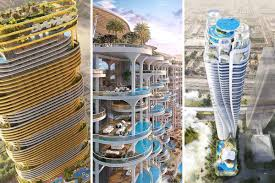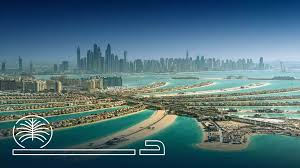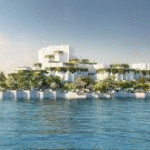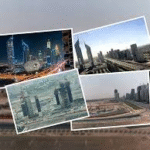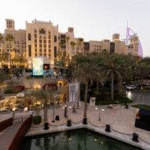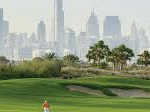Now Reading: 7 Powerful Drivers Behind Surging Home Demand in 2025
-
01
7 Powerful Drivers Behind Surging Home Demand in 2025
7 Powerful Drivers Behind Surging Home Demand in 2025
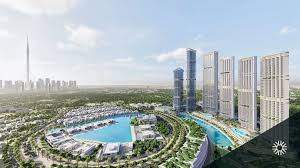
Table of Contents
Home Demand in 2025: Dubai’s real estate market, with AED 761 billion ($207.2 billion) in 2024 transactions, experiences a 2025 boom despite a 15% price correction due to a supply surge of 182,000–210,000 units, per Fitch Ratings. Home demand surges, driven by 5-8% price growth, 6-9% rental yields, and a population increase to 4 million, fueled by the Dubai 2040 Urban Master Plan and investor-friendly policies. This guide, crafted in clear, SEO-friendly language with an engaging tone, outlines seven powerful drivers behind Dubai’s 2025 home demand for U.S. investors, supported by data, legal insights, and risk analysis, aligning with Dubai’s Economic Agenda D33 and Real Estate Strategy 2033.
7 Powerful Drivers Behind Surging Home Demand
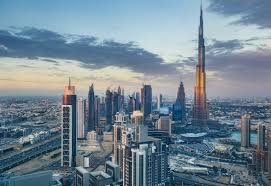
1. Population Growth and Expatriate Influx
Dubai’s population grew to 3.7 million in 2024, with projections reaching 4 million by 2025, driven by expatriates (90% of residents) seeking freehold homes in zones like Jumeirah Village Circle (JVC). Demand for AED 600,000 ($163,355) units rises, offering 7-9% yields.
- Impact: 110,000 new residents in 2024 increase demand for 1-2 bedroom apartments, per Dubai Statistics Center.
- Investor Opportunity: Target AED 800,000 ($217,807) JVC units for $15,247 annual yields, appreciating 8-12% by 2028.
- Example: A $163,355 JVC studio yields $11,435, gaining $24,503 by 2028.
2. Golden Visa Program Attracts Wealthy Investors
The Golden Visa, offering 10-year residency for AED 2 million ($544,518) property investments, drew 25% more applications in 2024, boosting demand for luxury homes in Palm Jumeirah and Downtown Dubai, per Dubai Land Department (DLD).
- Impact: High-net-worth individuals drive AED 20 million ($5.45 million) villa purchases, yielding 6-8%.
- Investor Opportunity: Invest in AED 2.5 million ($680,648) Dubai Marina units for $47,645 yields and residency benefits.
- Example: A $5.45 million Palm Jumeirah villa yields $381,150, appreciating $1.36 million by 2028.
3. Tourism Surge Fuels Short-Term Rental Demand
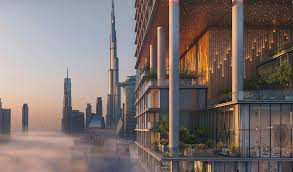
With 18.7 million tourists in 2024, Dubai projects 20 million visitors in 2025, increasing demand for short-term rentals in Dubai Marina and Downtown Dubai, achieving 8-10% yields versus 6-8% for long-term leases, per industry reports.
- Impact: AED 1.8 million ($490,067) units near attractions like Burj Khalifa see 85% occupancy.
- Investor Opportunity: Convert AED 1.5 million ($408,389) apartments to Airbnb, earning $40,839 annually.
- Example: A $490,067 Dubai Marina unit yields $49,006, gaining $73,510 by 2028.
4. Metro Expansion Enhances Connectivity
The Dubai Metro’s Blue and Red Line extensions, adding 32 stations by 2030, boost demand in Al Furjan and Dubai South, with 6-15% price growth projected for 2025, per real estate analytics. Properties near stations attract tenants.
- Impact: AED 800,000 ($217,807) Al Furjan units offer 7-9% yields due to improved accessibility.
- Investor Opportunity: Buy off-plan AED 1 million ($272,259) units for $19,058 yields and 10-12% appreciation.
- Example: A $217,807 Al Furjan unit yields $15,247, gaining $32,671 by 2028.
5. Zero Capital Gains and Rental Tax Incentives
Dubai’s tax-free environment, with no capital gains tax and exempt residential rental income, attracts U.S. investors seeking 6-9% yields, compared to 3-5% in global markets, per Knight Frank. Only commercial activities face 9% corporate tax above AED 375,000 ($102,103).
- Impact: AED 1.2 million ($326,710) Dubai Hills units maximize returns without tax erosion.
- Investor Opportunity: Invest in AED 600,000 ($163,355) Dubai South units for $11,435 tax-free yields.
- Example: A $326,710 Dubai Hills unit yields $22,870, gaining $40,839 by 2028.
6. Sustainability Appeals to Eco-Conscious Buyers
Sustainability drives demand for eco-friendly homes, with 2025 projects like Six Senses Residences in Dubai Marina featuring solar panels and LEED certifications. Green AED 600,000 ($163,355) Dubai South units yield 6-7%, per market trends.
- Impact: Eco-conscious buyers boost 8-12% appreciation in sustainable communities.
- Investor Opportunity: Target AED 1 million ($272,259) Al Furjan green units for $19,058 yields, retrofitting with energy-efficient systems.
- Example: A $163,355 Dubai South unit yields $11,435, gaining $24,503 by 2028.
7. Off-Plan Market Dominance Offers Value
Off-plan properties, comprising 70% of 2025 transactions, offer 8-12% appreciation by handover, per industry data. Flexible payment plans for AED 1 million ($272,259) Dubai Creek Harbour units attract investors during the correction.
- Impact: Early buyers secure discounted prices, enhancing ROI in high-growth zones.
- Investor Opportunity: Invest in AED 800,000 ($217,807) Dubai South off-plan units for $15,247 yields.
- Example: A $272,259 Dubai Creek Harbour unit yields $19,058, gaining $40,839 by 2028.
Legal and Tax Framework
- UAE Legal Framework:
- Property Ownership: 100% foreign ownership in freehold zones (e.g., Dubai Marina, JVC), per Law No. 7 of 2006.
- Corporate Tax: 9% on taxable income above AED 375,000 ($102,103), 0% for QFZPs in DMCC/DIFC. File by September 30, 2025, per Federal Tax Authority (FTA).
- VAT: 5% on commercial transactions, exempt for residential. Register if supplies exceed AED 375,000 by March 31, 2025.
- AML: KYC mandatory for transactions above AED 100,000, per Federal Law No. 20 of 2018. Penalties: AED 5 million ($1.36 million).
- Fees: 4% DLD transfer fee (split), AED 540-4,200 registration.
- U.S. Tax Framework:
- Reporting: Declare income via Forms 1040, 1116, Schedule E under FATCA. Income taxed at 10-37%, capital gains at 0-20%.
- Foreign Tax Credit (FTC): Offset UAE corporate tax against U.S. liability.
- FEIE: $130,800 exclusion for earned income, not rentals.
- Golden Visa: AED 2 million ($544,518) investments qualify for 10-year residency.
Risks and Mitigation
- Oversupply: 182,000–210,000 units by 2026 may deepen corrections. Focus on high-demand zones like Al Furjan and Palm Jumeirah.
- Geopolitical Risks: Regional tensions may affect tourism. Dubai’s safe-haven status mitigates impact.
- Developer Delays: 40% of off-plan projects face delays. Verify developer reliability with DLD.
- U.S. Tax Burden: IRS reporting reduces returns. Maximize FTC with professional tax advisors.
- Compliance Costs: VAT and AML compliance costs AED 10,000-50,000 ($2,723-13,613). Ensure timely filings.
Step-by-Step Guide for U.S. Investors
- Identify High-Demand Zones: Target JVC, Al Furjan, and Palm Jumeirah for 6-9% yields.
- Set Budget: Allocate $163,355-$5.45 million, or $2 million for Golden Visa eligibility, aiming for 8-15% appreciation by 2028.
- Invest Off-Plan: Secure Dubai Creek Harbour or Dubai South units with flexible payment plans.
- Leverage Short-Term Rentals: Convert Dubai Marina units for Airbnb, targeting 85% occupancy.
- Pursue Sustainability: Invest in eco-friendly Al Furjan units, retrofitting for utility savings.
- Ensure Compliance: Register for UAE VAT/corporate tax by March 31, 2025, and U.S. taxes by April 18, 2025, with FTC. Complete AML/KYC.
- Monitor Returns: Reinvest 6-10% yields into high-growth zones, tracking appreciation.
Conclusion
Dubai’s 2025 real estate boom, driven by population growth, Golden Visa incentives, tourism, metro expansions, tax benefits, sustainability, and off-plan dominance, fuels surging home demand in a AED 761 billion market. U.S. investors can secure 6-10% yields and 8-15% appreciation by targeting freehold zones like JVC, Palm Jumeirah, and Al Furjan. Despite risks like oversupply, Dubai’s investor-friendly policies and 2040 Urban Master Plan ensure resilience, making 2025 a prime investment opportunity. watch more
read more: 5 Massive Infrastructure Projects Enhancing Accessibility in 2025



